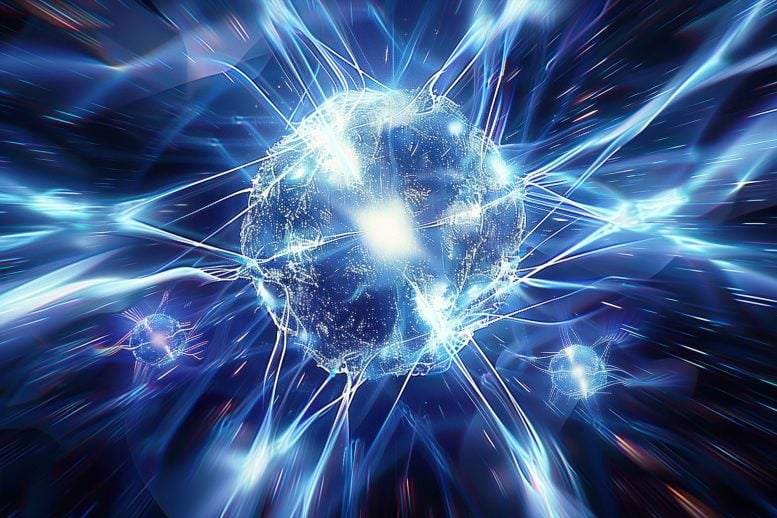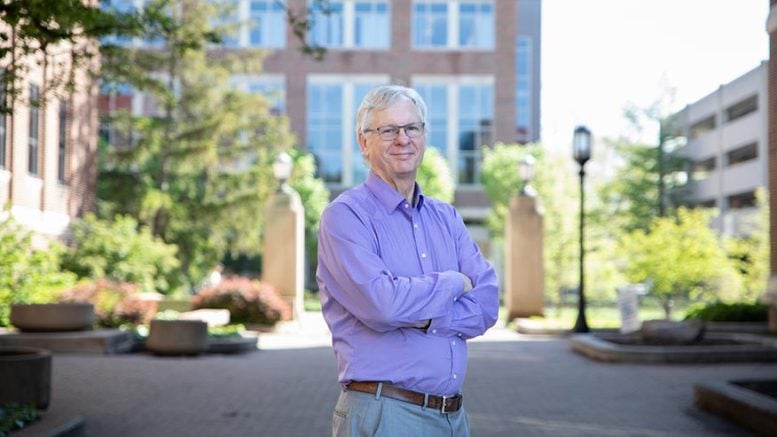
A new calculation shows how five atoms interact in the Efimov effect. It marks a major leap in quantum physics.
Matter behaves weirdly at the quantum scale, one of the strangest examples being the Efimov effect. In this state, three or more atoms can bind together through attractive forces even when excited to higher energy levels, yet the same forces are too weak to hold just two atoms. Researchers at Purdue University have now carried out the demanding quantum calculations needed to describe the Efimov effect in a system of five atoms, advancing our still incomplete understanding of matter’s most fundamental behavior.
This achievement is relevant to many areas of physics, ranging from atoms confined in a laser trap to the dense gases found inside neutron stars. The results not only strengthen the basic framework of quantum mechanics but may also improve methods for confining and studying atoms in controlled experiments.
For Christopher Greene, the Albert Overhauser Distinguished Professor of Physics at Purdue, the breakthrough builds on earlier work he completed in 2009, when he modeled the Efimov effect for four atoms. After 15 years of progress in theory and computation, Greene, a member of the Purdue Quantum Science and Engineering Institute, and his colleagues have now extended the model to five atoms. Their findings appear in the Proceedings of the National Academy of Sciences.
Solving the five-body challenge
“Understanding how five particles interact is a fundamental problem that we need to solve if we want to advance quantum applications beyond the lab,” said Greene, who led the research in collaboration with Michael Higgins, a postdoctoral research associate in Greene’s lab at the time of the research. “We were able to do this with a combination of faster computers, more parallel processing and a deeper understanding of the math, advances that took us a step farther than we could with the four-body problem in 2009.”

In a simplified description of gases, atoms or molecules drift through space and collide like billiard balls. When heated, the atoms move quickly, while at lower temperatures their motion slows. However, Greene explained that atoms also exert a faint attractive force on each other, which leads to an important question: how strong must this attraction be in order to bind the particles together during their interactions?
The solution lies in the Schrödinger equation, a fundamental tool of quantum mechanics that predicts how quantum systems evolve over time.
From theory to ultracold experiments
In the 1970s, Russian theoretical physicist Vitaly Efimov predicted that, given the nature of the attraction between atoms, more force would be needed to bind two atoms than would be needed to bind three. Paradoxically, once combined, the atoms would remain bound regardless of the energy added to the system, even though the added energy increases their movement and the distance they are able to move from one another.
As with other quantum phenomena, like superposition and entanglement, the Efimov state is hard to fathom given our experience of the physical world, but quantum interactions are the foundation of that everyday world.
In 1999, Greene’s research group predicted that, because quantum mechanical effects are more dominant when atoms move very slowly, the Efimov effect could be observed in gases that are cooled to nearly absolute zero. Five years later, a research group in Europe induced an Efimov state among three atoms of cesium in an ultracold gas. Greene, an expert in ultracold quantum physics, said inducing the phenomenon has since become experimentally routine.
Pushing the limits of quantum computation
But using Schrödinger’s equation to model the Efimov effect is computationally intensive even in the simplest possible scenario, and each additional atom in the system increases the complexity of the required calculations. Greene’s 2009 research showed that four identical bosons — a class of subatomic particle — bind more easily than three. The new solution, which computes the rate at which five identical bosons will combine over time, was only made possible by improvements in computational ability and better formulations that overcome mathematical roadblocks.
“We think we know the laws of quantum mechanics, but the formulas are incredibly difficult to solve. It’s taken a deeper understanding of the math to reach this point,” Greene said. He credited Higgins with planning and executing the supercomputer calculations to help advance theoretical physics.
References: “Five-body recombination of identical bosons” by Michael D. Higgins and Chris H. Greene, 25 April 2025, Proceedings of the National Academy of Sciences.
DOI: 10.1073/pnas.2503390122
“Signatures of universal four-body phenomena and their relation to the Efimov effect” by J. von Stecher, J. P. D’Incao and Chris H. Greene, 26 April 2009, Nature Physics.
DOI: 10.1038/nphys1253
“Recombination of Three Atoms in the Ultracold Limit” by B. D. Esry, Chris H. Greene and James P. Burke, Jr., 30 August 1999, Physical Review Letters.
DOI: 10.1103/PhysRevLett.83.1751
The research was supported by the National Science Foundation.
Never miss a breakthrough: Join the SciTechDaily newsletter.